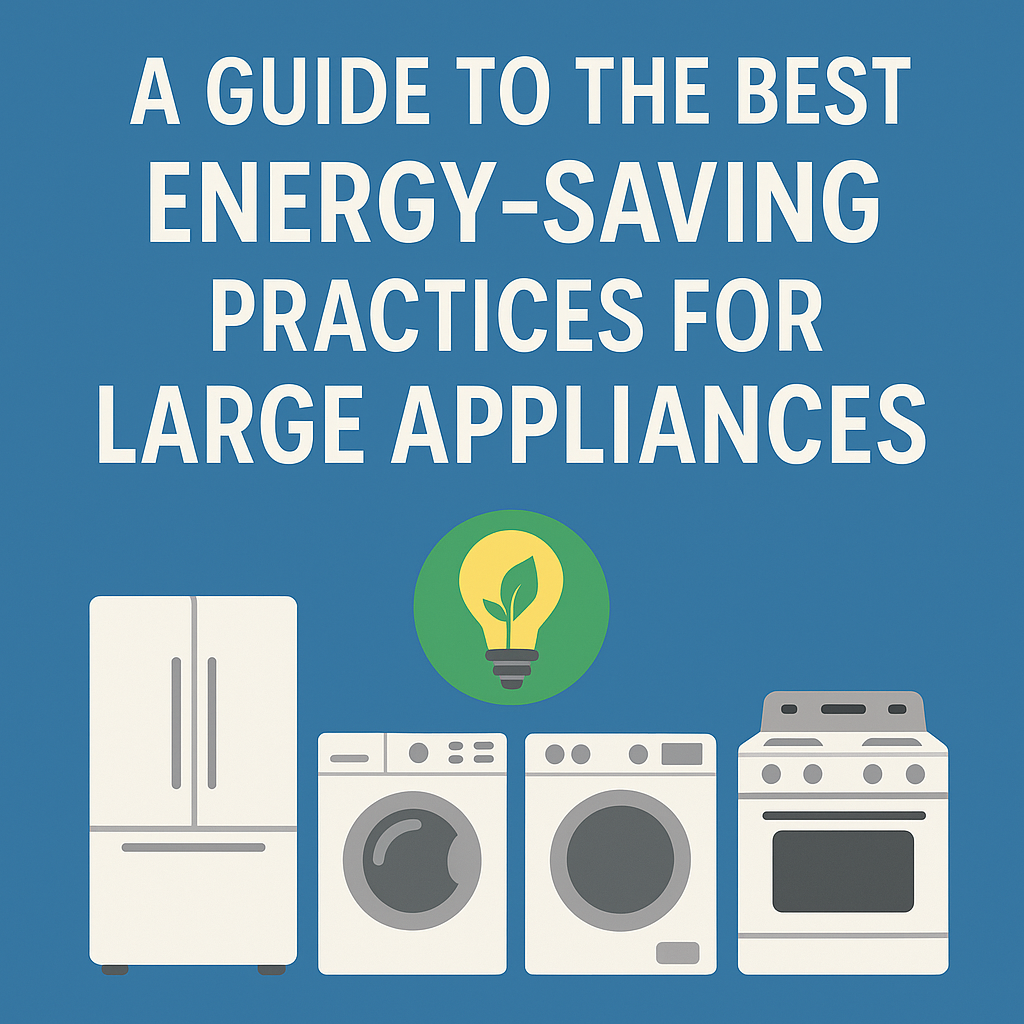
A Guide to the Best Energy-Saving Practices for Large Appliances
Share
When it comes to managing your household energy consumption, large appliances like refrigerators, washers, dryers, and ovens play a major role in your utility bills. At PRS Appliances, we believe that saving energy not only benefits the environment—it also helps you save money in the long run. Here’s how you can optimize the performance of your major appliances while keeping your energy usage in check.
1. Choose Energy Star® Certified Appliances
When upgrading or replacing an appliance, look for the Energy Star® label. These models meet strict efficiency guidelines set by the U.S. Environmental Protection Agency and Department of Energy. They typically use 10–50% less energy and water than standard models.
2. Maintain Proper Appliance Spacing
Avoid pushing refrigerators, dryers, and other large appliances directly against the wall. Allowing at least 1–2 inches of clearance improves airflow around the unit and helps it operate more efficiently, reducing unnecessary strain and energy usage.
3. Clean Coils and Filters Regularly
Dust and debris buildup on condenser coils (especially for refrigerators and freezers) and lint filters (in dryers) forces appliances to work harder. Clean these areas every 3–6 months to keep your machines operating at peak efficiency.
4. Wash Smart
When using your washing machine, wash with cold water whenever possible—it saves energy used to heat water. Also, run full loads to maximize each cycle’s efficiency. If your washer has a high-efficiency (HE) setting or uses suspension rods and dampers, maintaining them helps ensure optimal balance and spin cycles.
5. Use Dryers Efficiently
Dryers are one of the biggest energy users in the home. To reduce consumption:
-
Dry full loads, but don’t overload.
-
Use sensor-dry features instead of timed drying.
-
Clean the lint trap after each use.
-
Air-dry clothes when possible, especially in Hawaii’s warm climate.
6. Adjust Refrigerator Settings
Keep your fridge at 37–40°F and your freezer at 0°F. Lowering the temperature too much wastes energy. Also, ensure the door seals (gaskets) are intact to avoid cold air leaks.
7. Unplug Secondary or Unused Appliances
Garage fridges, old freezers, or unused wine coolers can eat up electricity if forgotten. If they aren’t essential, consider unplugging them to save energy.
8. Upgrade When Repairs Become Inefficient
Sometimes, continuing to repair an old appliance can cost more in energy than it's worth. If your appliance is over 10–15 years old and no longer energy efficient, it might be time to invest in a newer, more efficient model.
9. Consider Smart Appliances
Smart appliances let you schedule operations during off-peak hours, monitor energy use, and get alerts if something isn’t functioning correctly. This helps you optimize how and when your appliances consume electricity.
10. Keep It Local, Keep It Efficient
At PRS Appliances, we offer a range of second-channel and scratch-and-dent appliances that are not only affordable but also include many energy-efficient models. Our knowledgeable staff can help you choose the right appliance that fits your lifestyle and budget while helping you save energy.
Need Repairs or Parts?
If you’re looking to maintain or upgrade parts for your appliances, visit our sister store PRS Parts Inc. at 540 Lagoon Dr. We carry OEM replacement parts for most brands, and we’re happy to help you with expert advice and aloha.
PRS Appliances – Service with the Spirit of Aloha